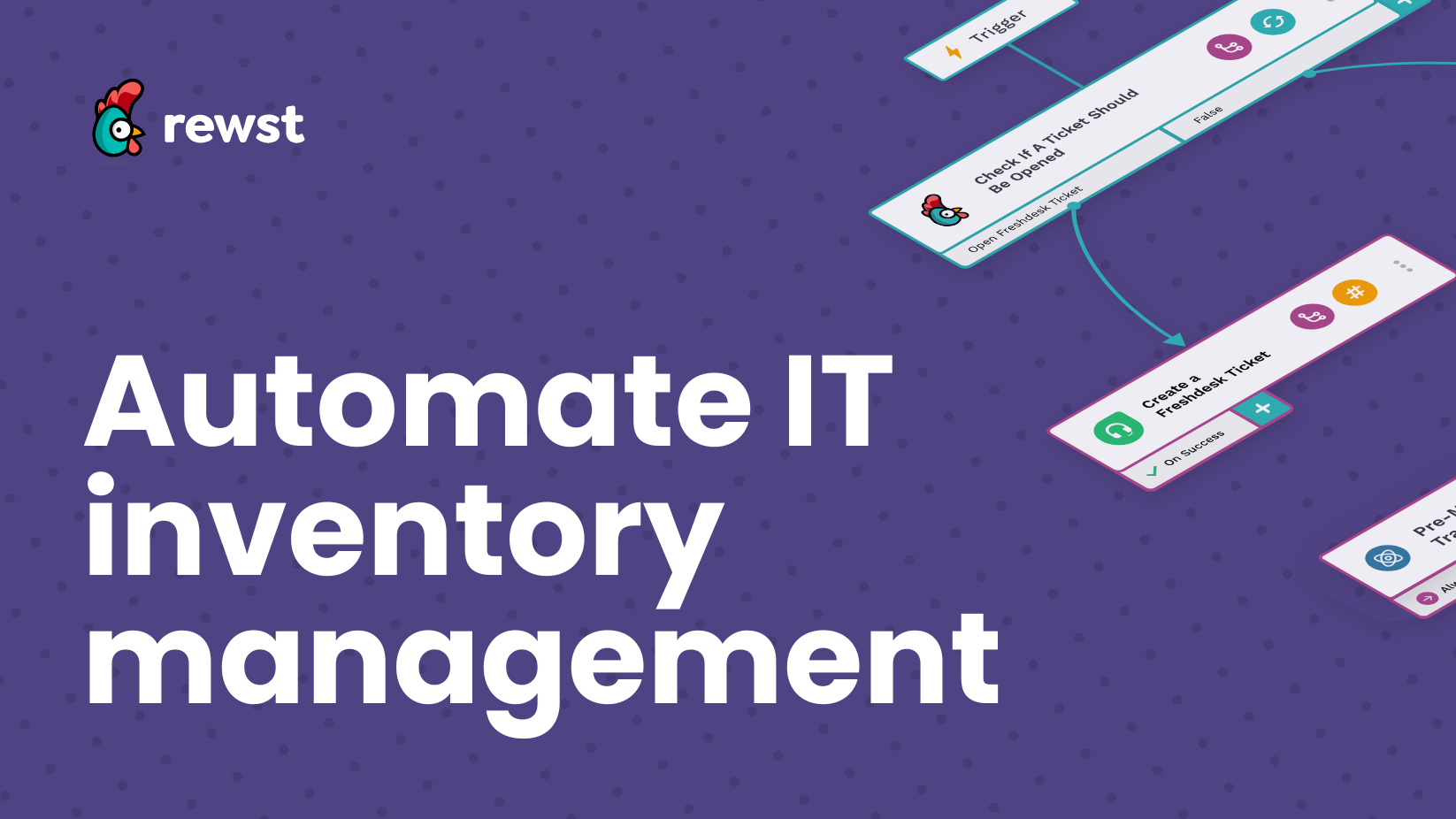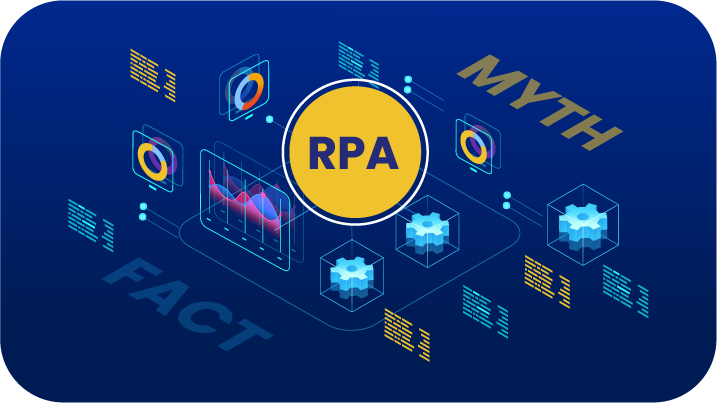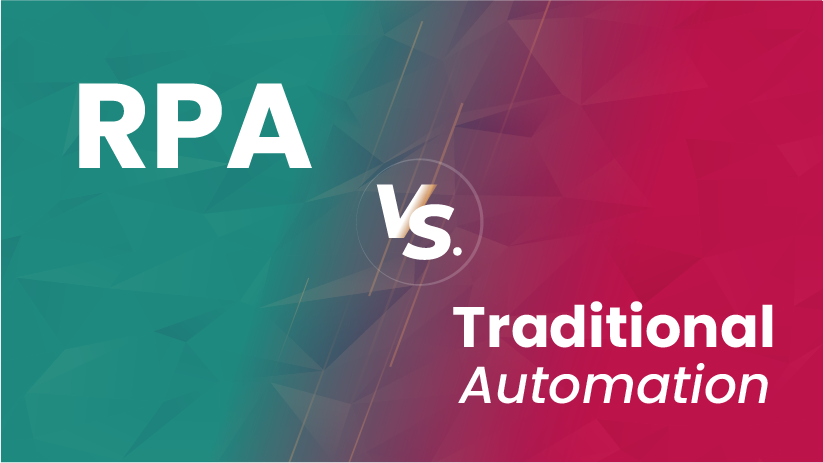5 Steps to Get Started with MSP Automation: The Power of Scoping
Discover 5 steps to initiate MSP automation efficiently: from scoping tasks to conducting payoff analyses, maximize efficiency.
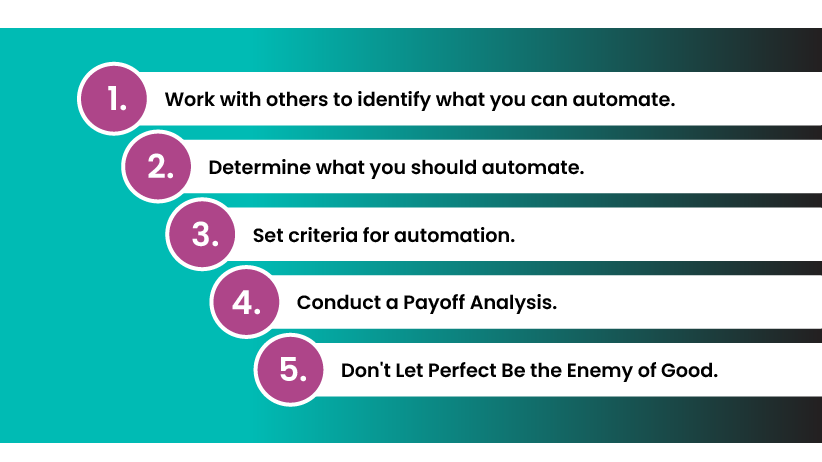
Imagine reclaiming countless technician hours from repetitive tasks, unlocking companywide innovation, and growing your MSP. Automation holds this promise, but where do you begin? The power lies in scoping—identifying the right processes to automate and defining clear criteria.
This blog focuses on how you can get started with automation, offering practical insights and strategies to kickstart your journey toward efficiency and success. From identifying automation opportunities to conducting payoff analyses and embracing a pragmatic approach, we’ll guide you through the essential steps to harness automation’s full potential.
Join us as we explore real-world examples, expert advice, and actionable tips that empower your MSP to drive business growth through automation.
1. Work with others to identify what you can automate
Begin by pinpointing low-hanging fruit—repetitive tasks with clear standard operating procedures (SOPs). Rewst Director of Customer Success Jamie Moore emphasized this concept in a recent ROC Open Mic discussion, noting that “any process that can be documented can be automated.”
One example of this proactive approach comes from Stuart Bailie, a Senior Systems Administrator at Ideological Systems Inc., who encourages his colleagues to engage in collective brainstorming sessions aimed at identifying mundane tasks that can be eliminated through automation.
Stuart uses various communication channels, such as Microsoft Teams, emails, and messaging platforms, to initiate an open dialogue where he encourages team members to reflect on their daily routines and identify areas where automation could significantly impact them. He often frames the automation conversation around reclaiming precious time from repetitive tasks, performing meaningful initiatives, and enhancing professional growth.
In this collaborative environment, no task is deemed too trivial for consideration. Stuart’s inclusive approach empowers team members to voice their frustrations and contribute ideas for potential automation solutions. By involving team members in the automation process and recognizing their contributions, he identifies potential processes ripe for automation and simultaneously fosters an MSP culture of collaborative innovation.
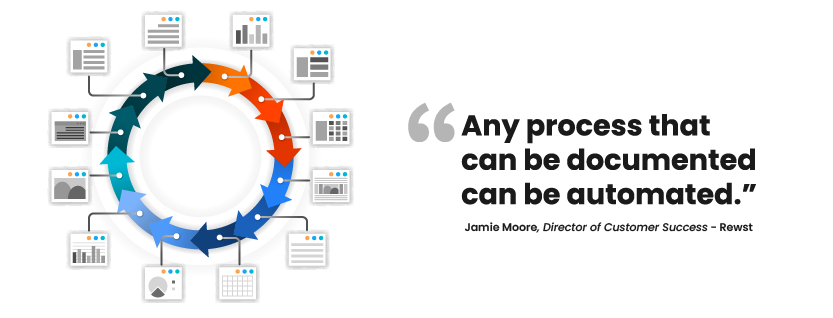
2. Determine what you should automate
Now that you have a comprehensive list of things you can automate, you might wonder how to condense that list down further. It’s easy to say, “Let’s automate everything,” but harder to decipher what on that comprehensive list you should tackle first. One approach is focusing on tasks that may seem trivial individually but collectively add up to significant time sinks.
Jim-Barry Behar, CEO of Relentless Solutions, sheds light on this aspect when he describes annoying, repetitive, manual endeavors that might take one or two minutes each but simultaneously take up several technician hours.
According to Jim, “A minor yet time-consuming issue could be something as simple as the inability to mark a field as required in ConnectWise. Spending two minutes per day per client can easily become three hours a week when spread across three technicians and hundreds of customers.”
While an action might seem small and predictable, it usually provides the best potential for automation.
3. Set criteria for automation
Now that you have a realistic working automation list, it’s time to set criteria for your endeavors. For example, repetitive tasks, following clear patterns, and having well-defined steps are often prime candidates for automation.
Remember, just because you can automate something, doesn’t mean it’s what you need to tackle right now. Consider whether there are barriers in place that hinder your ability to implement the automation. Here is a list of questions you can ask yourself before jumping right into building an automation:
- Is this task repeatable?
- Is it programmatically actionable?
- Can we execute this task without human intervention?
- Can we easily document this process, or do we have existing documentation?
- Is the necessary infrastructure (such as an API) in place to support this automation?
If you answered yes to the above questions, that manual endeavor is ripe for automation. However, if you answered no to any of the above questions, this might be a manual process you table for now. Evaluating potential automations against these criteria helps your MSP prioritize its efforts effectively while ensuring successful implementation.
For example, Linda Kraft, Director of Systems Architecture at Atlas Professional Services, began her automation journey by reviewing recurring ConnectWise ticket templates. These ticket templates represented recurring tasks already documented and standardized within her MSP. Linda’s team focused on routine administrative duties, troubleshooting procedures, or other repetitive actions already documented within these ticket templates that could be automated to optimize workflows and improve efficiency. As a result, her organization saves approximately 238 hours each month on automated initiatives.
By setting clear criteria for automation and leveraging existing processes like ticket templates, MSPs prioritize automation opportunities that align with their goals and objectives. Linda’s approach demonstrates the importance of setting criteria and starting with existing processes where automation can provide the most significant impact.
4. Conduct a Payoff Analysis
Once you’ve determined which automation initiatives are best suited for your MSP, conduct a payoff analysis of the potential benefits compared to the investment required. You can quantify aggregate time saved against the time and resources needed to develop new workflows. This is a high-level way to determine which automation to go after first.
One example illustrating the significance of payoff analysis comes from Karpel Solutions. Spearheaded by Integration and Automation Specialist Brian Simpson, the MSP collaborated with technicians and executives to assess the financial impact of future automation endeavors.
Brian and his team found that saving 5 minutes per week investigating phishing tickets would offset the cost of Rewst. This highlights the tangible benefits of single automation, demonstrating how even small gains justify prioritizing automation initiatives. By conducting a payoff analysis and aligning it with organizational objectives, MSPs can make data-driven decisions to enhance efficiency, productivity, and cost savings through automation.
5. Don’t Let Perfect Be the Enemy of Good
“Don’t let perfect be the enemy of good” is a mantra that Greggory Horn, our Senior Automation Engineer at Rewst, often emphasizes. He suggests MSPs start small, focusing on capturing most use cases rather than striving for perfection from the outset.
Greggory illustrates this principle with an example drawn from his own experience. He recounts how an MSP he worked with was fixated on achieving a 100% end goal with a new automation. Specifically, the MSP attempted to triage new software installation tickets. However, without new software installations automated, their relentless pursuit of perfection led to delays in implementation, hindering their progress.
Instead, Greggory advocates that MSPs start with more attainable benchmarks. In the example above, he encouraged the MSP to focus first on automating software installations. With that automation in place, they could then iterate and work to apply ticket triage later. If they had embraced this approach sooner and implemented the initial automation with a goal of capturing and resolving 75% of the problem efficiently, they could have realized significant efficiency gains much earlier.
As Greggory aptly puts it, “We want to automate everything, but if we’re constantly
chasing scenarios, we never deliver automation.”
Greggory’s example underscores the importance of adopting a pragmatic approach to automation. Rather than striving for perfection from the outset, organizations should focus on delivering tangible results and iteratively improving their automation solutions over time. This approach accelerates the implementation process and ensures that automation efforts align with the organization’s goals and priorities.
Scoping your way to success
In conclusion, embarking on automation requires a strategic approach that balances ambition with returns. Identifying, evaluating, and prioritizing tasks ripe for automation sets the stage for efficiency gains and tangible outcomes. Stuart Bailie’s inclusive approach and Linda Kraft’s focus on criteria highlight effective strategies. Conducting payoff analysis, as demonstrated by Brian Simpson, guides data-driven decisions. Embracing “Don’t let perfect be the enemy of good,” advocated by Greggory Horn, emphasizes a pragmatic, iterative approach.
Start small, focus on achievable goals, and iterate based on feedback and outcomes. With the right approach, automation can enhance your business operations and propel your MSP towards greater efficiency and success.
Latest Blog Posts
Subscribe to Our Blog
Stay up to date with the latest on our platform, automation, events and news.
We're committed to your privacy. Rewst uses the information you provide to us to contact you about our relevant content, products, and services. You may unsubscribe from these communications at any time.


